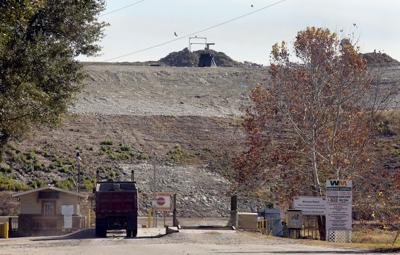JOHNS ISLAND — For years, the Charleston Water System has been diverting toxic leachate to a Johns Island processing plant. After a tanker truck spilled up to 6,000 gallons of the stuff on River Road in February, some residents are asking the water utility to ship the pollutant elsewhere — a move CWS leadership says isn’t feasible.
“My concern, and the concern of people on the island, is that River Road is getting more and more crowded,” Charleston City Councilman Jim McBride said at an April 22 Committee on Public Works and Utilities meeting.
“It’s a two-lane road, with not a lot of shoulders, which contributed to the crash, I think.”
Leachate is created when water filters through a landfill, and picks up all kinds of chemical and organic pollutants along the way. It’s like filtering water through coffee grounds to make your morning brew — just replace the beans with garbage.
The utility’s spokesperson, Mike Saia, told city leaders in April that there are many reasons the system sends leachate to the processing plant on Johns Island, located at the intersection of River and Murraywood roads.
That includes a “symbiotic relationship” with the Oakridge Landfill in Dorchester County, where the truck that crashed in February was coming from. Oakridge takes Charleston’s solids, and CWS takes Oakridge’s liquids.
The system can’t send the leachate directly to its central Plum Island facility, as the highly-concentrated wastewater can “wreak havoc” on that plant’s infrastructure if it arrives untreated. The Johns Island plant was also built large enough to handle a population boom, so its upper capacity hasn’t been reached.
Perhaps most importantly, Saia said processing the so-called “garbage juice” above Charleston’s watershed would be risky.
“It is a tremendous benefit to the entire Lowcountry that we treat this leachate and then release the water into the harbor, versus above us where our drinking water comes from,” he said.
Each truck can carry between 4,000 and 6,000 gallons of leachate. Saia said it’s unclear how much was on the truck when it crashed, but “most of it was spilled.” Clean-up took a few hours and the scene was “fully remediated.” Saia said the truck was operated by a subcontractor hired by the Oakridge Landfill, which was responsible for the managing the cleanup.
In response to the February spill, and feedback from the community, Saia said the utility is adding more pavement on the turn-out from the site onto River Road to give trucks more room to safely maneuver. But any improvements to the narrow road beyond that might be tricky.
River Road, like many roads across the state, is managed by the South Carolina Department of Transportation, not a local government. In an emailed statement, a department spokesperson wrote that the SCDOT “does not currently have any plans” for updating or widening the two-lane road.
“However, we encourage anyone with issues on a state-maintained roadway to be in touch with us directly at 855-467-2368,” the spokesperson wrote.
Toxic vs. hazardous
Technically, “toxic” is not the same thing as “hazardous.”
“The toxicity of a substance is the potential of that substance to cause harm, and is only one factor in determining whether a hazard exists,” according to Purdue University. “The hazard of a chemical is the practical likelihood that the chemical will cause harm.”
Saia said the wastewater that spilled forth from the February accident was toxic, but not hazardous since the landfill it was from doesn’t accept hazardous waste.
“People ask us what’s in it. We don’t know what’s in every drop, because we don’t know what people send to the landfill,” he said. “But we do know that it meets industry standards and that it’s a high-strength wastewater.”
Andrew Wunderley, executive director of Charleston Waterkeeper, said leachate is a significant environmental threat.
“It’s a cocktail of toxic substances,” he said. “It can be anything from heavy metals to solvents to herbicides to pesticides. It can be PFAS and forever chemicals. That being discharged into the environment is incredibly dangerous — not only to environmental health, but also to human health.”
Saia said CWS will be discussing the spill, and potential solutions to prevent future accidents, with the Johns Island Council at a public meeting on July 11.










